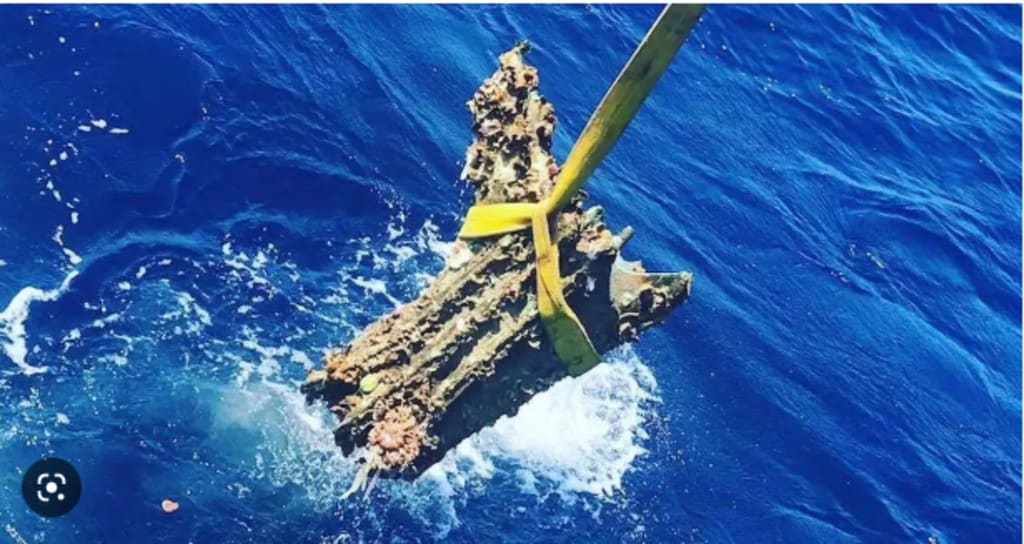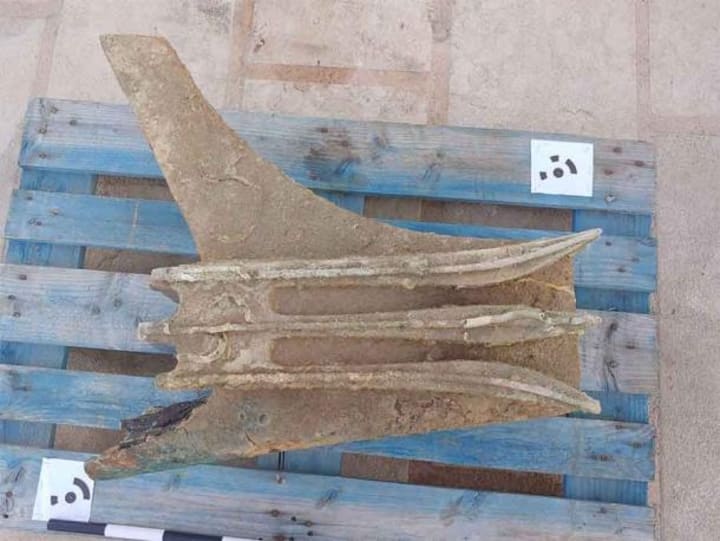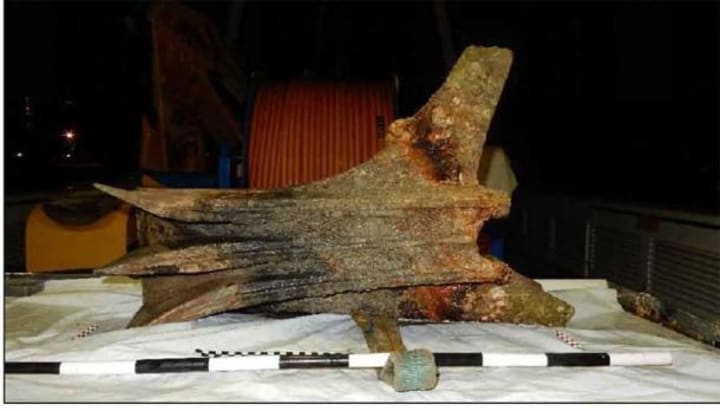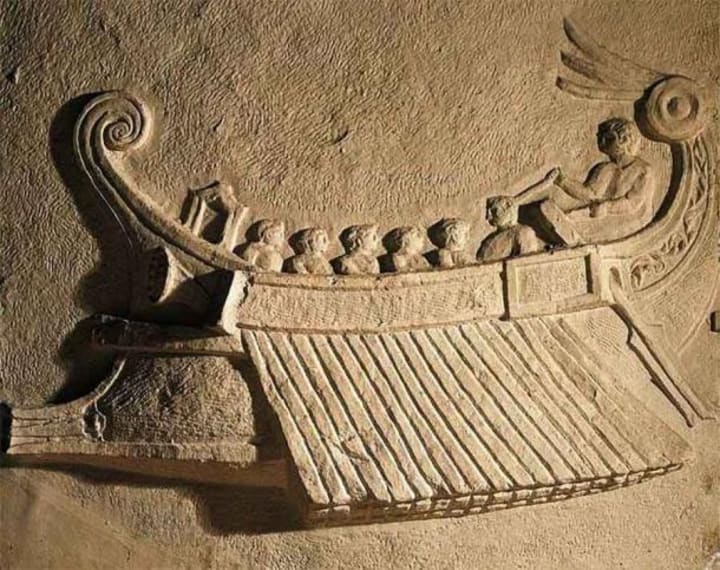Divers Discovered Four Roman Naval Battering Rams From the Punic War of 241 B.C.
Ancient Roman battering rams bore inscriptions from judges who approved their construction and were equipped with three massive blades on each side to rend enemy ships apart.

Divers unearthed four antique bronze Roman battering rams, the type used at the front of a warship, near Ustica Island, north of Palermo, Italy. These unique artifacts of ancient naval warfare are excellent examples of Roman engineering and one of the reasons why the Romans defeated the Carthaginians in conflicts in the third century BCE.
A group of scuba divers studying the bottom east of Sicily were examining the cargo holds of sunken freight ships when four enormous, corroding ancient war machines rose from the mud. It is thought that the four Roman battering rams (also known as Roman rostrums) were utilized on Roman ships during the legendary Battle of the Aegates, which marked the end of the First Punic War.
The Romans employed battering rams against the Carthage fleet.
Polybius, a Greek historian, and Diodorus of Sicily documented the Battle of the Aegates, which occurred around the Aegadian Islands on March 10, 241 B.C. At this decisive encounter, Roman warships sank fifty Carthaginian ships and captured seventy more. Sicily was ceded to the Romans by Carthage, the historic capital of the Carthaginian civilization, on the eastern shore of the Lake of Tunis in what is now Tunisia.

In 2010, Italian archaeologist Sebastiano Tusa pinpointed the battle's site after a fisherman recovered a battering ram from the renowned conflict. Divers from the Sicilian Marine Archaeology Unit and the RPM Nautical Foundation have retrieved four further Roman battering rams from the site. Originally attached to the bows of four Roman warships, these formidable bronze battering rams weigh around 200 kilos each (450 pounds).
The Romans learned from the Carthaginians how to build better ships.
Valeria Livigni of the Marine Archaeology Unit in Sicily reported that the four freshly recovered Roman battering rams were discovered among the ruins of three commercial ships carrying cargoes of ceramic jars. Livigni stated that one of the three cargo ships still had more than 200 jars on board, some of which contained traces of wine.

While the precise location has not been disclosed, archaeologists have stated that the discoveries were located "among the Aegadian Islands, close to the island of Ustica and off the shore of Isola delle Femmine."
The Romans' destruction of the Carthaginian fleet during the Battle of the Aegates was so decisive that it brought an end to the First Punic War. In the early third century B.C., Rome in Italy and Carthage fought their first of three wars for control of the western Mediterranean.
Roman engineers duplicated Carthaginian ship designs a year before the fight, when they realized that a seaborne assault was the only option to take Carthage. Despite the possibility that the Roman ships were based on Carthaginian designs, they were not heavily laden with cargo during the war. And Roman naval battering hammers were far superior to their Carthaginian counterparts.
The Roman battering rams were superior overall!
Each of the four Roman battering rams has three monstrous blades on each side, built specifically to splinter the hulls of Carthaginian ships. Livigni said the Carthaginian rams were "less well-made than Roman rams."
Carthaginian rams frequently bear inscriptions dedicated to their god Baal, whereas Roman rams bear inscriptions from judges attesting that they were crafted according to engineering standards.
The presence of this primary weather deity, who governed Carthage's fertility and agricultural success, is revealing. It appears that Roman commanders relied on laws of construction and engineering norms, but their foes relied on fate and fortune granted by their gods.

At the fight, it is believed that lighter Roman vessels rowed into position before striking the poorly manned Carthaginian fleet, which was carrying heavy supplies bound for the besieged ports of Drepana and Lilybaeum (modern Marsala). David Ruff of the RPM Nautical Foundation told the Times that both the Romans and Carthaginians attempted to "hammer each other broadside" and that the Roman ships, which were lighter and better manned, outmanoeuvred their opponents.
After the naval battle, the Romans retook control of Sicily. Therefore, these four Roman naval battering rams are artifacts from an event that completely altered the future of the ancient Mediterranean civilization.
About the Creator
Rare Stories
Our goal is to give you stories that will have you hooked.
This is an extension of the Quora space: Rare Stories
X(formerly Twitter): Scarce Stories
Official Bookstore: davidkellertruecrime
Writers:
....xoxo






Comments
There are no comments for this story
Be the first to respond and start the conversation.